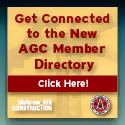|
    Print this Article | Send to Colleague Print this Article | Send to Colleague
How SaaS will impact six key software categories
By Liz Herbert and Andrew Bartels, Forrester Research
As more sourcing executives consider incorporating SaaS solutions into their overall technology vendor landscape, the potential to significantly disrupt the current software market grows. And while SaaS adoption is expected to expand in the coming years, the challenge for sourcing professionals will be a lack of uniform adoption across the whole software market. In some software categories, SaaS will be a disruptive technology, in others the only option, and in many cases SaaS will have minimal impact.
To navigate this changing landscape, Forrester analyzed over 120 software products, assessing the degree to which these products are being offered as SaaS solutions today, and the likely adoption in the future.
Overall, SaaS will more than double from seven per cent of software investment in 2010 to 16 per cent in 2013, so it's not surprising that many of the assessed product categories will change to have a greater or smaller number of SaaS solutions during that time. Here's a look at where SaaS has and has not become a factor in the software market:
IT Management Applications
Despite the threat of losing jobs to cloud providers, IT is increasingly recognizing that cloud solutions can save money and allow workers to focus on what is important to them in areas of core competency, business value and differentiation. In fact, IT areas such as service desk, IT asset management and capacity planning have already adopted SaaS, working with Service-Now, HP, CA, and BMC, rather than traditional vendors. SaaS is also gaining market share in security software, where users benefit from rapid upgrades (able to stay real-time with new threats) and network detection (able to leverage the power of the network for greater threat detection).
CRM Software and productivity applications
Desktop and collaboration applications are well-suited for SaaS. Their broad user base – including employees, customers and partners – makes accessibility a must. Some CRM attributes that hinder SaaS adoption include a large amount of data, high security and varied maturity of products. Although blogs and wikis are almost fully SaaS, and e-mail and collaboration are following suit, content management programs are still relying mainly on traditional services.
ERP and Supply Chain Software
Very few ERP and supply chain functions have taken on a SaaS model, and not many are likely to change over the next few years. Many of these categories are still seen as too mission-controlled, custom or heavily integrated to successfully use SaaS. One exception to this is ePurchasing/eProcurement, which has greatly shifted over to SaaS in new product categories like services procurement, automated spend analysis, supplier network services and supplier risk and performance management.
Business Intelligence
Analytics applications are difficult to shift to SaaS because of the complexity of solution, data sources and integration and a need for processing power. Currently, most business performance, predictive and text analytics and event processing will continue to take place on-premise. However, some core BI solutions are moving towards SaaS already – and more will move toward SaaS deployment in the near future.
HR Software
SaaS is already becoming the dominant technology for HR products that touch a variety of users, from potential candidates to veteran employees. In the case of HR programs, the user-friendliness and accessibility of SaaS allows for easier collaboration across levels and departments. Some already SaaS-heavy software categories such as recruiting, performance management, and eLearning will become even more SaaS-controlled by 2013.
Platform and Middleware Solutions
These categories are still dominated by on-premise vendors and are likely to stay that way for the near future. Some key reasons: speed and performance issues, degree of customization and integration. Only a few platform and middleware categories – governance, risk and compliance, application development and storage – have signs of slight movement toward SaaS.
In light of increased SaaS adoption, sourcing executives must prepare for a hybrid landscape where SaaS co-exists with on-premise and hosted solutions, with many new vendors in the overall software portfolio. To navigate this complex environment, sourcing professionals should consider weighing the valuable aspects of SaaS – such as functionality, community, and accessibility – with risk elements like vendor viability, vendor lock-in and security.
Additionally, it will be important for sourcing professionals to incorporate new criteria into their buying decisions to create ways to compare the cost and value of SaaS with more traditional models.
About the Authors
Liz Herbert is principal analyst at Forrester Research, serving sourcing and vendor management professionals. Andrew Bartels is VP and principal analyst at Forrester Research, serving vendor strategy professionals.
|


